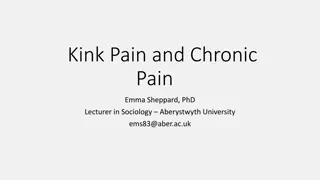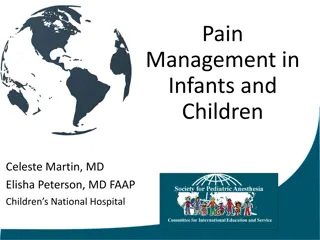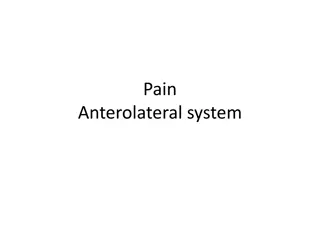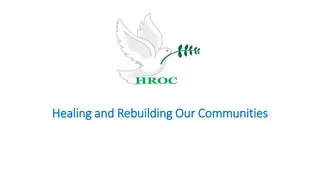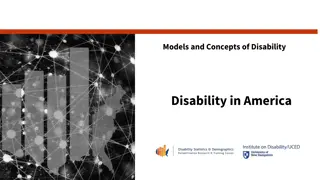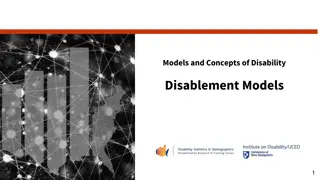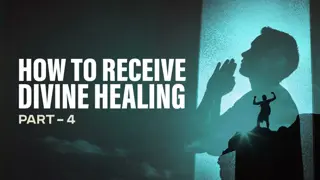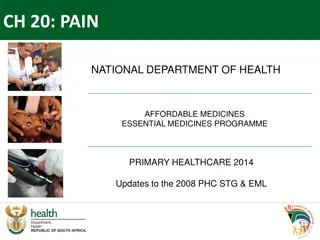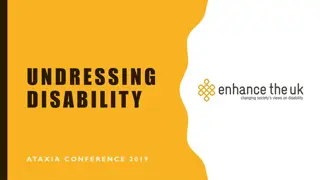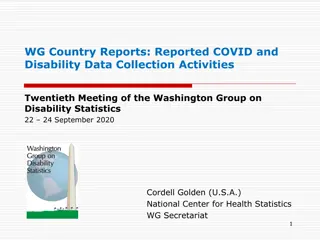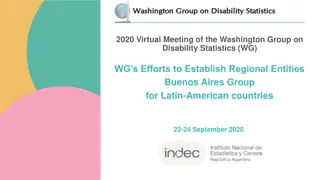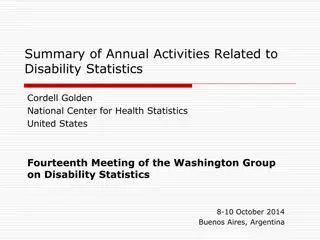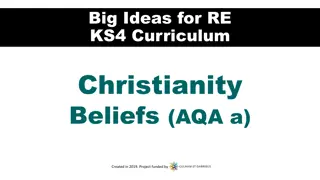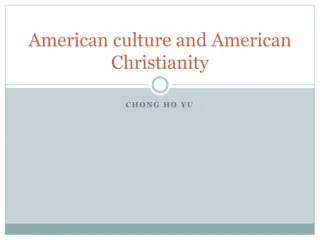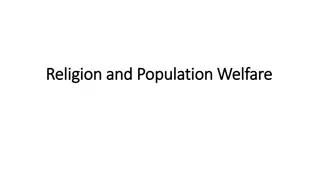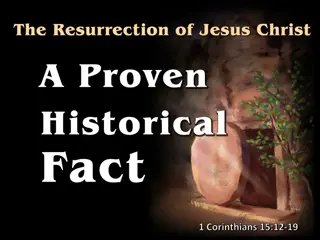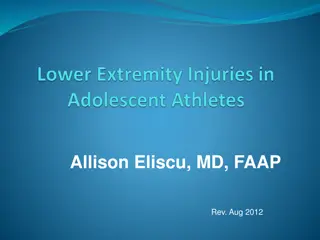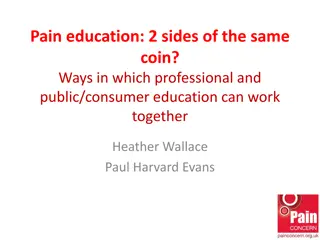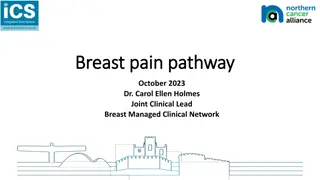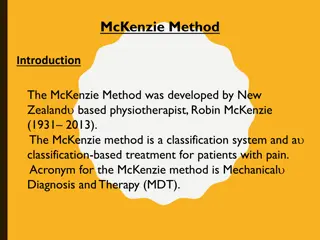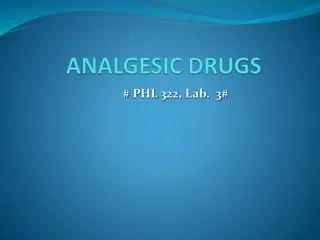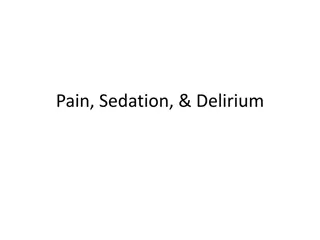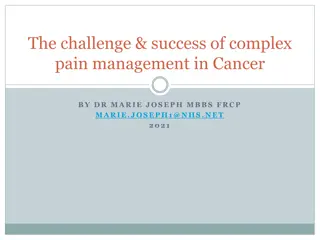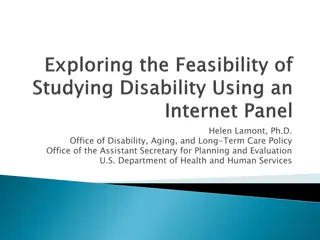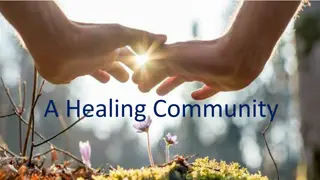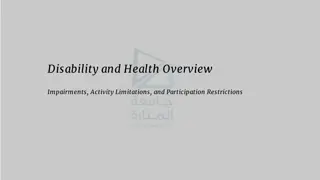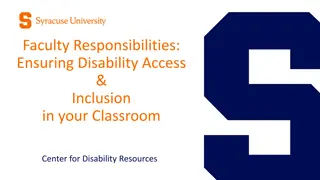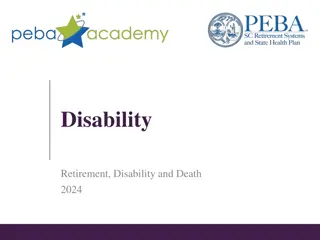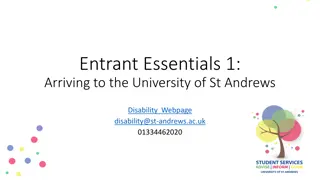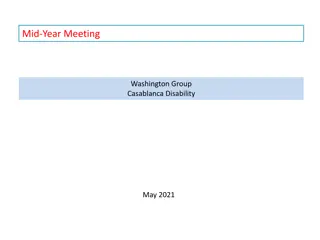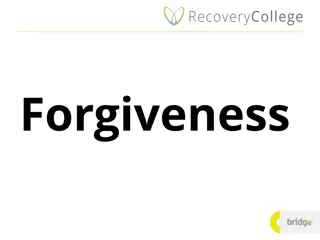Understanding Pain, Disability, and Healing in Christianity
Delve into the intricate relationship between pain, disability, and healing within the context of Christianity. Explore the precise nature of pain juxtaposed with the blurred essence of joy, as captured in poignant reflections and definitions. Gain insights into impairments, disabilities, and diverse models of disability, all intertwined with the hope for cure and healing.
Download Presentation

Please find below an Image/Link to download the presentation.
The content on the website is provided AS IS for your information and personal use only. It may not be sold, licensed, or shared on other websites without obtaining consent from the author. Download presentation by click this link. If you encounter any issues during the download, it is possible that the publisher has removed the file from their server.
E N D
Presentation Transcript
Among the Pains Christianity, Disability, Healing J. Alexander Sider, Ph.D. Harry and Jean Yoder Scholar in Bible and Religion Bluffton University
Image credit: Above: https://media.poetryfoundation.org/m/image/978/yehuda- amichai.jpg?w=1200&h=1200&fit=max. Right: https://images.gr-assets.com/books/1328874859l/186492.jpg
The Precision of Pain The precision of pain and the blurriness of joy. I m thinking how precise people are when they describe their pain in a doctor s office. Even those who haven t learned to read and write are precise: This one s a throbbing pain, that one s a wrenching pain, this one gnaws, that one burns, this is a sharp pain and that a dull one. Right here. Precisely here, yes, yes. Joy blurs everything. I ve heard people say after nights of love and feasting, It was great, I was in seventh heaven. Even the spaceman who floated in outer space, tethered to a spaceship, could say only, Great, wonderful, I have no words. The blurriness of joy and the precision of pain I want to describe, with a sharp pain s precision, happiness and blurry joy. I learned to speak among the pains. Yehuda Amichai, Open Closed Open, 99.
Image Credit: Above: http://www.unitedagents.co.uk/sites/default/files/thumbnails/image/rosegillian%2 0photo.jpg Left: https://images-na.ssl-images- amazon.com/images/I/41EYKC267YL._SX322_BO1,204,203,200_.jpg
Keep your mind in hell, and despair not. --St. Silouan of Athos
Definitions Impairment, Disability, Medical Model of Disability, Social Model of Disability, Cure, and Healing
Impairment A diminishment in function or ability when measured against a typical benchmark. Any loss or abnormality of psychological, physiological, or anatomical structure or function (ICIDH definition, 1980). Condenses several classes of risk: region, race, family medical history, and national origin. Emerged in life insurance-related efforts to fix the monetary value of social difference and debility (Michael Ralph).
Disability Impairment plus its negative social consequences. Produced by environmental and social factors as much as by bodily conditions. No specific set of conditions just is disabling regardless of time, place, and social setting.
Although people with disabilities span a broad spectrum of medical conditions with diverse effects on appearance and function whatever the setting, whether in education, medicine, rehabilitation, social welfare policy, or society at large, a common set of stigmatizing values and arrangements has historically operated against us. Nancy Eiesland, The Disabled God, 14.
Medical Model of Disability A set of conditions Accrues to an individual Medical community regulates access to services. Adults with disabilities are four times more likely to report their health to be fair or poor than people with no disabilities (40.3% vs. 9.9%). Source: Tawara Goode, Health Disparities at the Intersection of Race, Ethnicity, and Disability: The Role of Faith Communities. Lecture. Summer Institute of Theology and Disability. Raleigh, NC: June 12, 2018.
Social Model of Disability Disability results from the interactions between persons with impairments and attitudinal and environmental barriers that hinder their full and effective participation in society on an equal basis with others. 2008 UN Convention on the Rights of Persons with Disabilities
Disability Subjectivity While it may be true that to lose one s leg, or to be visually impaired, or to have a chronic illness in the twenty-first- century United States is incommensurate with what those impairments or conditions meant in eighteenth-century Europe or ancient Egypt, disability itself always begins and ends with the subjective impressions of the individual who experiences the world through her body. Adams, Reiss, and Serlin, Disability, in Keywords for Disability Studies (New York: NYU Press, 2015), 9.
Cure and Healing Distinction emerges between U.S. Civil War and WWI as two themes converge: 1. Christian responses to the new medicine. 1. Critical reflection on the ministry of Jesus.
Ableist theology Any theology that presumes able-bodiedness, and by so doing, constructs persons with disabilities as marginalized and largely invisible others. Cf. Vera Chouinard, Making Space for Disabling Difference: Challenging Ableist Geographies, Environment and Planning D: Society and Space 15:4 (August 1997): 380.
Resources Dependency, Celebration, and Friendship
Dependency Dependence on others allows for needed care, knowledge, culture, technology, and political, social and economic goods. Interdependence: Combats myth of autonomy and inappropriate dependency, but Recasts relationships as reciprocal. Not Am I dependent or not? but In what ways do I depend on others? Source: Eva Feder Kittay, Dependency in Keywords for Disability Studies, 54.
Gregory of Nyssa (335-394 CE) Did not advocate for interdependence as reciprocity, but for Mutuality or togetherness as forms of acknowledged dependence based in human relationship to God.
Celebration Who celebrates with ? is a social justice question. See 1 Corinthians 11:17- 22. Image Credit: http://fbclongwood.org/wp- content/uploads/sites/45/2017/07/Lords-Supper-Monthly.jpg
Friendship Aristotle (384-322 BCE) thought that friendships are usually Circumstantial or Convenient, but that a true friend is like a second self. So: Friendships are matters of similarity. Image Credit: https://cdn.britannica.com/84/87984-004-5ADE9ACA.jpg
Thomas Aquinas (1225-1274) We are created to be God s friends. Friendship depends on difference, and is a matter of being liked, not a matter of reciprocity. Image Credit: https://upload.wikimedia.org/wikipedia/commons/thumb/d/d1/Carlo_Crivelli_007.jpg/220px-Carlo_Crivelli_007.jpg
Justice work is never justice work unless it is justice-for-all work.
Bibliography Adams, Rachel, Benjamin Reiss, and David Serlin, eds. Keywords for Disability Studies. New York: NYU Press, 2015. Pochon, R. and C. Declercq. Emotion Recognition by Children with Down Syndrome: A Longitudinal Study. Journal of Intellectual and Developmental Disability 38:4 (December 2013): 332-43. doi: 10.3109/13668250.2013.826346. Alison, James. On Being Liked. New York: Crossroad, 2003. Rose, Gillian. Love s Work. London: Chatto & Windus, 1995. Amichai, Yehuda. The Precision of Pain. Open Closed Open. Trans. Chana Bloch and Chana Kronfeld. Orlando: Harcourt, 2000. Shanks, Andrew. Against Innocence: Gillian Rose s Reception and Gift of Faith. London: SCM Press, 2008. Chouinard, Vera. Making Space for Disabling Difference: Challenging Ableist Geographies. Environment and Planning D: Society and Space 15:4 (August 1997): 379 387. Sider, J. Alexander.To See History Doxologically: History and Holiness in John Howard Yoder s Ecclesiology. Grand Rapids: Eerdmans, 2011. Eiesland, Nancy L. The Disabled God: Toward a Liberatory Theology of Disability. Nashville: Abingdon Press, 1994. Webb-Mitchell, Brett. Beyond Accessibility: Toward the Full Inclusion of People with Disabilities in Faith Communities. New York: Church Publishing, 2010. Endres, David J. What Medicine Could Not Cure: Faith Healings at the Shrine of Our Lady of Consolation, Carey, Ohio. U.S. Catholic Historian 34:3 (September 2016): 25-49. Wendell, Susan. Unhealthy Disabled: Treating Chronic Illnesses as Disabilities. The Disability Studies Reader. 5 e. Ed. Lennard J. Davis. New York: Routledge, 2017: 160-172. Gaventa, William C. Disability and Spirituality: Recovering Wholeness. Waco, TX: Baylor University Press, 2018. Goode, Tawara D. Health Disparities at the Intersection of Race, Ethnicity, and Disability: The Role of Faith Communities. Lecture. Summer Institute of Theology and Disability. Raleigh, NC: June 12, 2018. Krahn, G.L., D.K. Walker, and R. Correa-De Araujo. Persons with Disabilities as an Unrecognized Health Disparity Population. American Journal of Public Health, 105:Suppl 2 (April 2015): S198-S206. doi: 10.2105/AJPH.2014.302182. Epub February 2015. MacIntyre, Alasdair. Dependent Rational Animals: Why Humans Need the Virtues. Chicago: Open Court, 1999.


